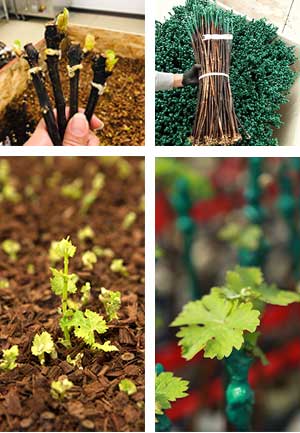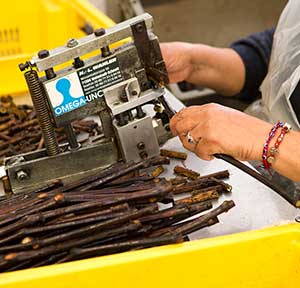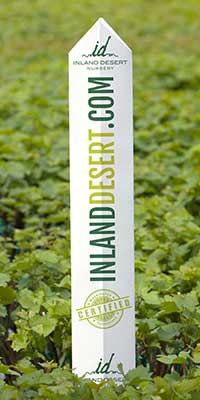
Our Products
When ordering grapevines from Inland Desert Nursery, depending on the time of year, you can either customize your order to your exact Scion-Rootstock and Delivery date specifications or review what’s currently available from our most recent inventory availability list.

“Own Rooted” Vines
What are they?
“Own-Rooted” Vines are produced by rooting a cutting (a cane section about 12-14” long) and growing it in the field or greenhouse.
This product is less expensive than grafted vines, but because they are “own-rooted” they offer none of the special qualities that can be obtained from rootstock such as pest resistance, soil adaptation, or vigor management characteristics.
Own-rooted vines are most commonly used in colder climates and/or when disease and pest pressure are minimal.
Grafted Vines
What are they?
Grafting is a process that joins two plant parts together. The upper part of the graft (the scion) becomes the top part of the plant and bears the fruit. The lower part of the plant (the rootstock) becomes the root system of the plant.
Traditional wine grape varieties are of the species Vitis vinifera. Grapevine rootstocks come from different species of vine that have been selected to help the scion variety (Vitis vinifera) overcome difficult growing conditions, such as pest resistance, drought resistance, excessive soil moisture, and unfavorable soil pH levels.
Grape growers can take advantage of rootstocks to help the vines’ overall health, productivity, and vigor control. Growers choose specific rootstocks to help manage the unique challenges of their site.
A major pest of Vitis Vinifera grape varieties is Phylloxera. Phylloxera is a very destructive, root-eating pest of Vitis vinifera grape varieties and is native to North America. Most rootstock species used for grafting grapes are native to North America, so they have evolved over time to have natural defenses against Phylloxera. Vitis vinifera grape varieties are non-native to North America, so they have no natural protection against Phylloxera, which results in poor vine health or even death when grown in soils with populations of Phylloxera. Grafting a Vitis vinifera species as the scion onto an American rootstock species can successfully overcome the challenges of growing wine grapes in regions with Phylloxera.
Inland Desert Nursery’s grafted vines are built using a process called bench grafting, where a grafting machine is used to cut and join the scion with the rootstock prior to propagating and initiating root growth.








